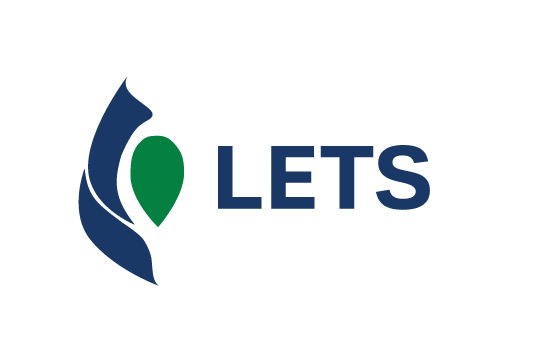On October 19, the "Innovation Day" .
In 1901, exactly on this day, the Brazilian Alberto Santos Dumont was able to complete a lap around the Eiffel Tower (Paris) with the airship he invented. And with this it is interesting to observe how innovation is often linked to tourism. Dumont not only defied the laws of physics, but also broke the paradigm of being able to take flight with more time and, even closer, to what would be one of the most visited tourist attractions in the world (by the way, the creation and construction of the Eiffel Tower was surprisingly innovative at the time). It should also be noted that, since the invention of the famous 14-bis and other airships, to the present day, man proves that the sky is no longer the limit, especially with the future and inevitable popularization of space tourism.
Because innovation is so important for our society and companies, Law No. 12,193 was published in 2010, which establishes Innovation Day (available at: https://www.planalto.gov.br/ccivil_03/_Ato2007-2010/2010/Lei/L12193.htm ), whose initiative arose from the Brazilian Society for Technological Innovation (PROTEC).
Similarly, recognizing this relevance of innovation for our country, in 2014 I defended my doctoral thesis at the Center for Sustainable Development (CDS), linked to the University of Brasília (UnB), entitled "Visiting the XXI century: innovations for sustainability in Brazilian tourist destinations" (available at: http://icts.unb.br/jspui/handle/10482/17944?locale=es ), under the guidance of Prof. Dr. Elimar Nascimento. It was even at his invitation, in 2009, that I joined the Laboratory of Studies in Tourism and Sustainability (LETS), a research group in which I have been honored to participate since then!
The objective of the thesis was to identify and analyze how Brazilian tourist destinations adopt innovations for sustainability. One of the conclusions of this study indicated that innovation for sustainability is still a punctual practice in Brazil, but it has the potential to help tourist destinations become more competitive. Incremental innovations are the most recurrent and disruptive innovations in tourism (especially those linked to sustainability) are rare in the country. One of the classic examples, in this direction, of a more "radical" innovation, which in fact changes paradigms of production, commercialization and consumption, was the creation of the voucher by the Municipal Tourism Council of Bonito/MS, which restructured and organized the local tourism value chain, reconciling tourism development with environmental conservation. To this day, this innovation is a reference worldwide.
For the development of the thesis, 50 specialists in tourism and innovation residing in various parts of Brazil were involved. They were presented with 12 innovation practices for sustainability (identified according to a literature review). Thus, it was concluded that the majority indicated these three practices as the most relevant for increasing the competitiveness of Brazilian destinations, which are:
1. "Incentive to entrepreneurship and business management focused on innovation, with financing programs and economic subsidies with innovation and sustainability as requirements";
2. "Social innovations with improved working conditions, education, health, as well as socialization in public spaces – direct/indirect repercussion on tourism"; and
3. "Less bureaucratic public policies (efficient management), adoption of 'green public procurement' and stimulation of the culture of S, T & I (Science, Technology and Innovation) – direct/indirect repercussion on tourism".
These findings demonstrate the need for structural and conjunctural changes in public policies, which could have a systemic and positive impact on tourism.
The recommendations, in this context, are tautological: the need for more investment in research and development, greater and better training of professionals (especially in the era of new technologies) and the creation/consolidation of a favorable environment for innovation, in which the State, companies and universities/research centers are minimally associated (Triple Helix of Innovation).
Occasionally, and purposely using an artificial intelligence resource, I highlight some examples of technologies mentioned by ChatGPT that can help increase the competitiveness of tourism in Brazil. From the topics below, which obviously do not exhaust the debate, it is possible to infer that such technologies can be adopted as a strategy for innovation practices for sustainability. They are (text adapted from the digital tool):
- Augmented and virtual reality: can be used to create more immersive and engaging tourist experiences.
- Artificial intelligence: It can be used to personalize the tourist's experience by offering relevant recommendations and offers.
- Blockchain : It can be used to ensure the security and transparency of tourist transactions.
- Internet of Things: It can be used to improve the efficiency of tourism processes, such as infrastructure monitoring and access control.
Prof. Dr. Glauco Arbix already said in 2007 that innovation in Brazil is in its "early childhood". Recently, businessman Walter Longo, recognized for his work in digital entrepreneurship, especially in the area of communication, said that if in other eras of humanity we experienced waves of technology, now, with artificial intelligence, we have a "tsunami" of new challenges, but that we can learn to "surf" it.
In tourism, this is no different. I validate the literature in which it is recorded that tourism activity can be economically more competitive and, at the same time, sustainable, such as greater participation of the local business community, increase in the generation of local income and social adhesion and efficiency in the use of natural resources.
The ideal is to use our intelligence, creativity and the same innovative capacity of centuries and centuries (like Santos Dumont) to reinvent a world with healthy air, water and soil conditions, balance between conservation and use of biodiversity, less bureaucratic public policies that are more appropriate to the needs of civil society, fairer economic and financial issues, decent working and employment conditions, cultural appreciation, among many transformations.
I believe that research groups such as LETS/UnB converge these agendas and provide debates capable of presenting possible paths for the different Stakeholders which confer the multisectoral and multimotivational character of tourism, for the present and for the future, between "flights and surfing on the waves of innovation".


